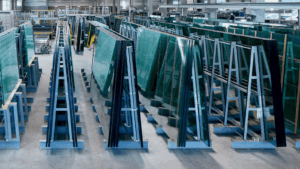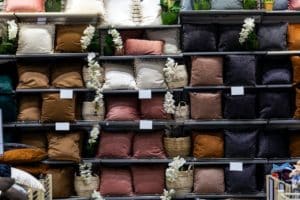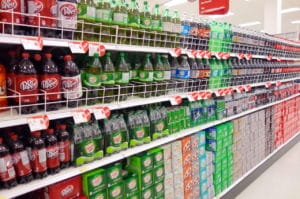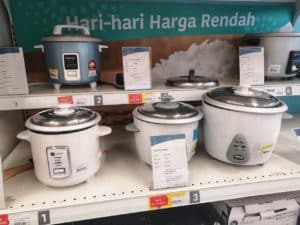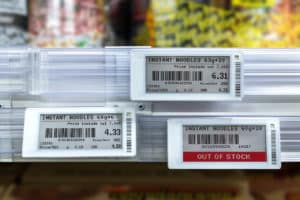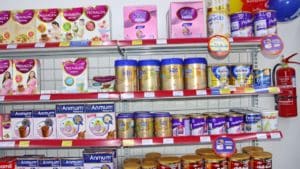Looking for ways to boost sales in your store? One of the most immediate ways is to optimize shelving. By optimally and attractively organizing shelves and their products, you can create a more attractive space that encourages customers to approach, become interested and buy.
Setting up an efficient organization offers you two immediate benefits: ensuring your customers have the best possible experience in an attractive sales area, and optimizing your teams' productivity.
In this article, we'll give you our top tips on how to optimize your store's shelving.
Create a shopping path in your store
Creating a shopping path in your store is an effective way of encouraging customers to explore different areas and discover the products best suited to specific needs.
Create an aesthetic visual journey
Starting with a visual layout, create a pathway that allows customers to navigate naturally from one area of the store to another. Using various elements such as displays and signs to guide customers will help them stay focused on the product range and enable them to make informed decisions about what they buy. In this way, you'll make your customers feel comfortable and confident in the store environment.
Put key products at the end of the road
By keeping the most popular or eagerly-awaited products away from the entrance, you encourage your customers to discover other brands, or other types of products, which you've carefully placed along their route. The traffic you'll create will be used to scatter products of interest (promotions, new products, discoveries) along your customers' path. A way of highlighting high-margin products or those with a short sell-by date, for example.
With thoughtful planning and execution, creating a shopping journey in your store can lead to increased sales, traffic and customer satisfaction!
Rely on your suppliers' advertising campaigns and news.
One of the best ways to boost your sales is to take advantage of your suppliers' advertising campaigns and news. By leveraging their tools, you can attract potential customers who might be interested in what you have to offer.
Use your suppliers' tools
Use the POS (point-of-sale) advertising and stop-rays that brands provide. They're often coupled with an overall communications strategy, and it's a safe bet that the brand will be rolling out its image on the internet and/or television at the same time. The only way you'll benefit from their efforts is by reminding your customers.
Integrating supplier campaigns or news into your own strategies not only increases exposure for certain products and attracts more customers, but also creates long-term relationships that can benefit both parties over time. Not to mention that this solution will cost you nothing other than time to set up.
Consider the overall aesthetics of the department.
Taking a moment to consider the overall aesthetics of the department can be a profitable experience. Your space can exude a certain energy that speaks directly to your customer.
Organize by range and color
On the shelf, if your customers are to find what they need, they need visual consistency that is both logical and aesthetically pleasing. In short, you need to highlight the various product ranges and varieties to make the acquisition process easier for your customers. The best way to make your shelves attractive is to present your products attractively. Play with their packaging (facing) to enhance their layout.
Master the art of arranging facings
Horizontal or vertical? That's the big question. It all depends on how much space you plan to allocate. Vertical facing is by far the most effective, but it requires a lot of space. When a brand has a vertical position, its range becomes highly visible at a glance: from the first to the last level. Horizontal facing, on the other hand, allows you to highlight the items that bring the most profit to your store. Not every product receives the same level of promotion and attention. A less equitable solution, to be sure, but better suited to small spaces.
Encourage competition: help you compare prices.
Guaranteeing competitive prices is essential to gaining a competitive edge in any market. Enabling your customers to do the same means positioning yourself as an ally to their wallet. By displaying competing products in close proximity to each other, you'll enable your customers to compare prices and capacities at a glance. What's more, this approach may persuade consumers to switch to your private label from the leading brand they would have initially chosen.
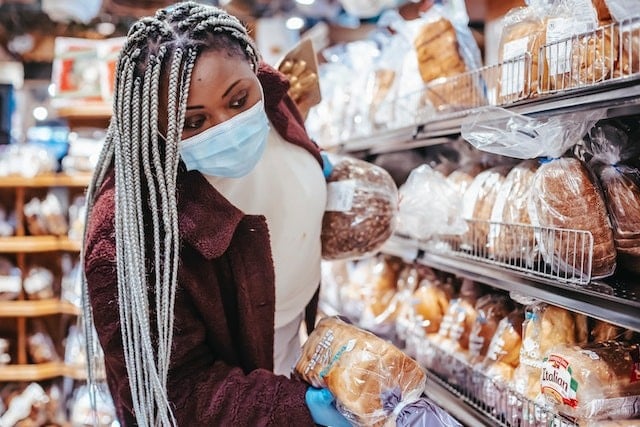
Think of associated products to increase the basket.
Let's think like e-commerce stores: a web shopper is often approached with the formula: "people who bought that also bought this". An additional item, often inexpensive but judiciously selected to complete the customer's purchase. By broadening the spectrum of your product range, you can encourage customers to buy more. It's all about creating need. Think of products that could enhance those already on the shelves. Place them close to each other or create packs.
This technique, known as cross-merchandising, is formidable if well thought-out. For example, by offering paper straws next to cocktails or ties next to shirts. By duplicating this idea to several of your flagship products, you have a sure-fire way of encouraging more purchases and increasing your customers' average basket.
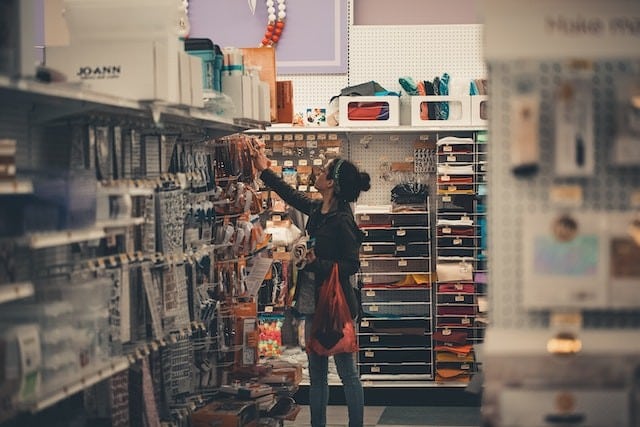
Don't neglect the strategic point of sale at the checkouts.
Checkouts are more than just a place to finalize sales. They've been described as the "hot zone of purchase". They represent a strategic location for inexpensive additional purchases (promotions, treats, etc.). Investing in strategic point-of-sale systems can help you improve your purchasing process, boost profitability and enhance the overall customer experience.
You don't need to invest huge resources for this: simple solutions such as user-friendly displays, promotional bins or low shelves can make all the difference and create a final impulse purchase on the part of your customers.
A manager's tips for optimizing team work.
Maximizing team effectiveness at work is not always an easy task. But when everyone works more efficiently, everyone wins!
Use unloading to limit round trips
Reducing the number of trips back and forth between stock and shelf saves time. Thanks to the depot technique, you can reduce the distance between stock and store by taking products from the bins and placing them directly on the shelf. This solution is very simple and really effective in optimizing team performance. All you need is a cart and you're done.
Check best-before dates
Assign your self-service employee to keep a constant watch on BBDs to avoid losses. He'll have to fill the shelves, taking care to place the nearest products at the front of the aisle. This method, well known as FIFO (first-in/first-out), remains one of the most effective against food loss.
Good inventory management
Perfect control of your shelves requires perfect control of the best-sellers and the products to highlight. Particular attention must be paid to stock levels and frequency. Don't lose sight of the fact that a product out-of-stock is detrimental to a department store's image.
Here are a few tips you can put into practice to optimize your shelving. Don't hesitate to put yourself in your customer's shoes and ask yourself again and again how you can make their experience in your store more attractive with every visit.


